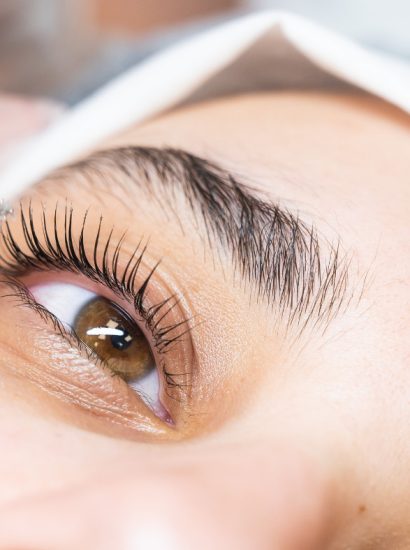The Ordinary Glycolic Acid is a popular skincare product known for its exfoliating properties and ability to improve skin texture and tone. For beginners looking to incorporate this product into their skincare routine, it’s essential to understand its benefits, usage, and potential side effects. This article will cover 12 must-know facts about The Ordinary Glycolic-Acid, providing you with all the information you need to get started.
1. What is Glycolic Acid?
Glycolic acid is an alpha hydroxy acid (AHA) derived from sugar cane. It is widely used in skincare products for its ability to exfoliate the skin by breaking down the bonds between dead skin cells. This process helps to reveal fresher, smoother skin underneath. The Ordinary Glycolic-Acid, in particular, contains 7% glycolic acid, making it effective yet gentle enough for most skin types.
2. Benefits of The Ordinary Glycolic Acid
The Ordinary Glycolic-Acid offers numerous benefits for the skin. Regular use can help to:
Improve skin texture and tone
Reduce the appearance of fine lines and wrinkles
Fade hyperpigmentation and dark spots
Minimize the appearance of pores
Enhance skin radiance and glow
3. How to Use The Ordinary Glycolic Acid
Using The Ordinary Glycolic-Acid correctly is crucial to avoid irritation and maximize its benefits. Here are some steps to follow:
Cleanse: Start with a clean face, free of makeup and impurities.
Apply: Use a cotton pad to apply a small amount of glycolic acid solution to your face and neck, avoiding the eye area.
Wait: Allow the product to absorb for a few minutes before applying other skincare products.
Moisturize: Follow up with a hydrating serum and moisturizer to lock in moisture.
4. When to Use The Ordinary Glycolic Acid
For beginners, it’s best to start using The Ordinary Glycolic-Acid 1-2 times a week, preferably in the evening. As your skin builds tolerance, you can gradually increase the frequency to every other night. It’s essential to monitor your skin’s response and adjust usage accordingly.
5. Patch Testing is Crucial
Before incorporating The Ordinary Glycolic-Acid into your routine, perform a patch test to ensure your skin doesn’t react negatively. Apply a small amount of the product to a discreet area, such as the inside of your wrist or behind your ear, and wait 24 hours. If no irritation occurs, you can proceed to use it on your face.
6. Sun Protection is a Must
Glycolic acid can increase your skin’s sensitivity to the sun, making it more prone to sunburn. Always apply sunscreen with an SPF of 30 or higher during the day, even if you use the product at night. This will help protect your skin from harmful UV rays and prevent further damage.
7. Combining Glycolic Acid with Other Products
The Ordinary Glycolic Acid can be used alongside other skincare products, but it’s essential to avoid certain combinations to prevent irritation. Do not use it with other acids (like salicylic acid), retinoids, or vitamin C serums on the same day. Instead, alternate these products to give your skin a break and avoid over-exfoliation.
8. Potential Side Effects
While The Ordinary Glycolic-Acid is generally well-tolerated, some users may experience side effects, including:
Redness
Dryness
Peeling
Tingling or stinging sensation
If these symptoms persist or worsen, discontinue use and consult a dermatologist.
9. Suitable for Various Skin Types
The Ordinary Glycolic-Acid is suitable for most skin types, including normal, oily, and combination skin. However, those with sensitive or extremely dry skin should proceed with caution and consider using a lower concentration of glycolic acid or a different exfoliant altogether.
10. Storage and Shelf Life
To maintain the efficacy of The Ordinary Glycolic Acid, store it in a cool, dry place away from direct sunlight. Ensure the cap is tightly closed after each use to prevent oxidation. The product typically has a shelf life of 12 months after opening.
11. Affordable and Accessible
One of the standout features of The Ordinary Glycolic Acid is its affordability. Despite its high-quality formulation, it is priced competitively, making it accessible to a wide range of consumers. This affordability does not compromise its effectiveness, making it a favorite among skincare enthusiasts.
12. Positive Reviews and User Experiences
The Ordinary Glycolic Acid has received numerous positive reviews from users worldwide. Many people have reported significant improvements in their skin’s texture, tone, and overall appearance. These testimonials highlight the product’s effectiveness and reinforce its reputation as a reliable skincare solution.
Conclusion
Incorporating The Ordinary Glycolic Acid into your skincare routine can yield impressive results, especially for beginners. By understanding its benefits, proper usage, and potential side effects, you can make informed decisions and achieve healthier, more radiant skin. Remember to start slowly, patch test, and protect your skin from the sun to maximize the benefits of this powerful exfoliant.
FAQs
1. Can I use The Ordinary Glycolic-Acid every day?
It is not recommended for beginners to use The Ordinary Glycolic Acid every day. Start with 1-2 times a week and gradually increase the frequency as your skin builds tolerance.
2. Can I use The Ordinary Glycolic-Acid with retinol?
Avoid using The Ordinary Glycolic Acid with retinol on the same day to prevent irritation. Alternate their use on different nights.
3. How long does it take to see results from The Ordinary Glycolic Acid?
Results can vary, but many users notice improvements in skin texture and tone within a few weeks of consistent use.
4. Is The Ordinary Glycolic Acid suitable for sensitive skin?
Those with sensitive skin should proceed with caution. Consider using a lower concentration of glycolic acid or a different exfoliant if irritation occurs.
5. Can I use The Ordinary Glycolic Acid on acne-prone skin?
Yes, The Ordinary Glycolic Acid can be beneficial for acne-prone skin by helping to exfoliate and unclog pores. However, monitor your skin’s response and adjust usage if needed.
Also read : CLEANSE GENTLY 101: BEST PRACTICES FOR SENSITIVE SKIN





